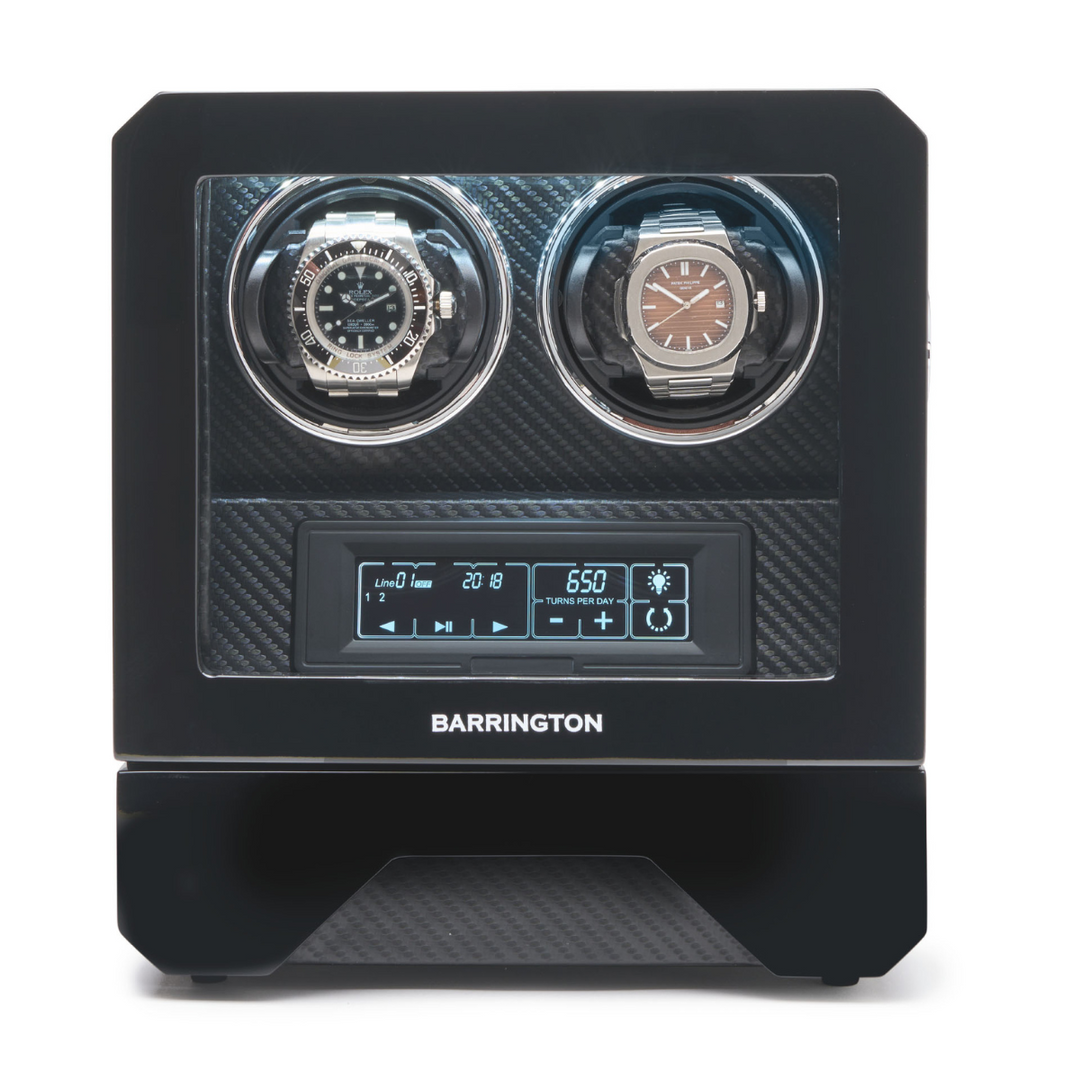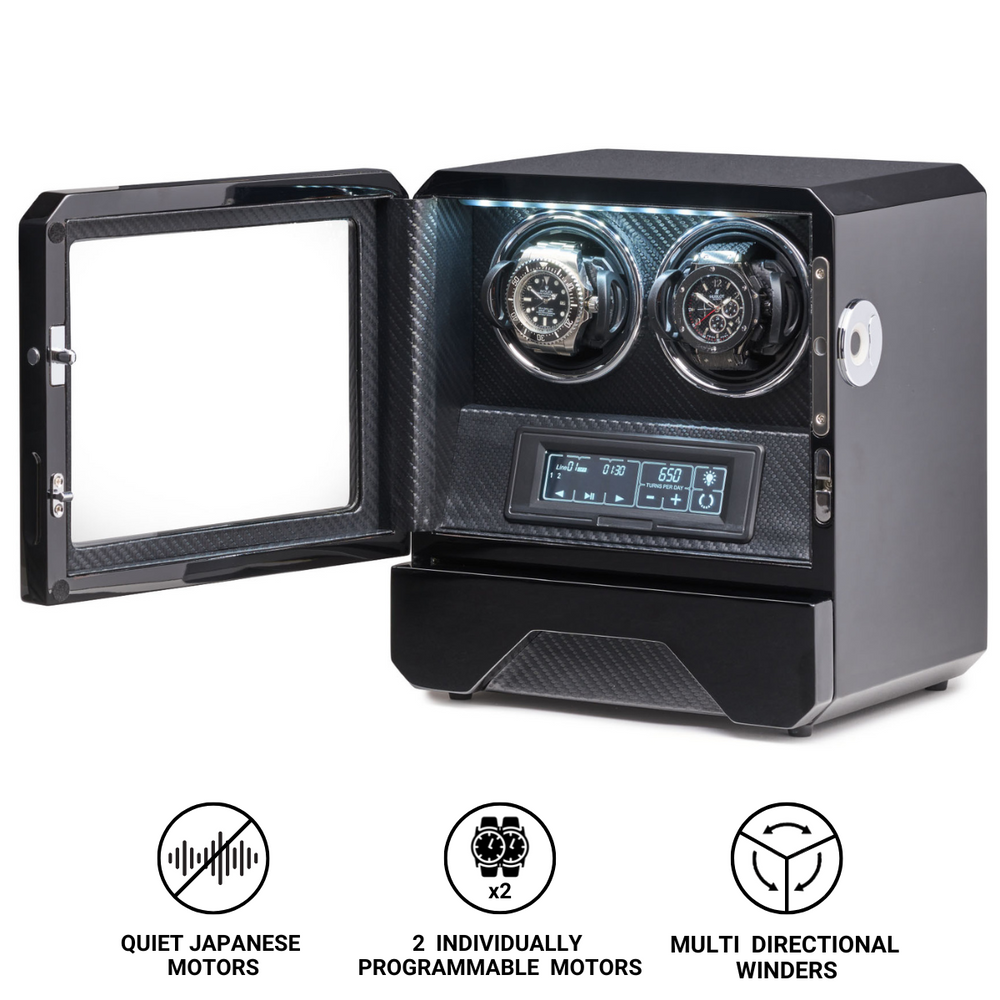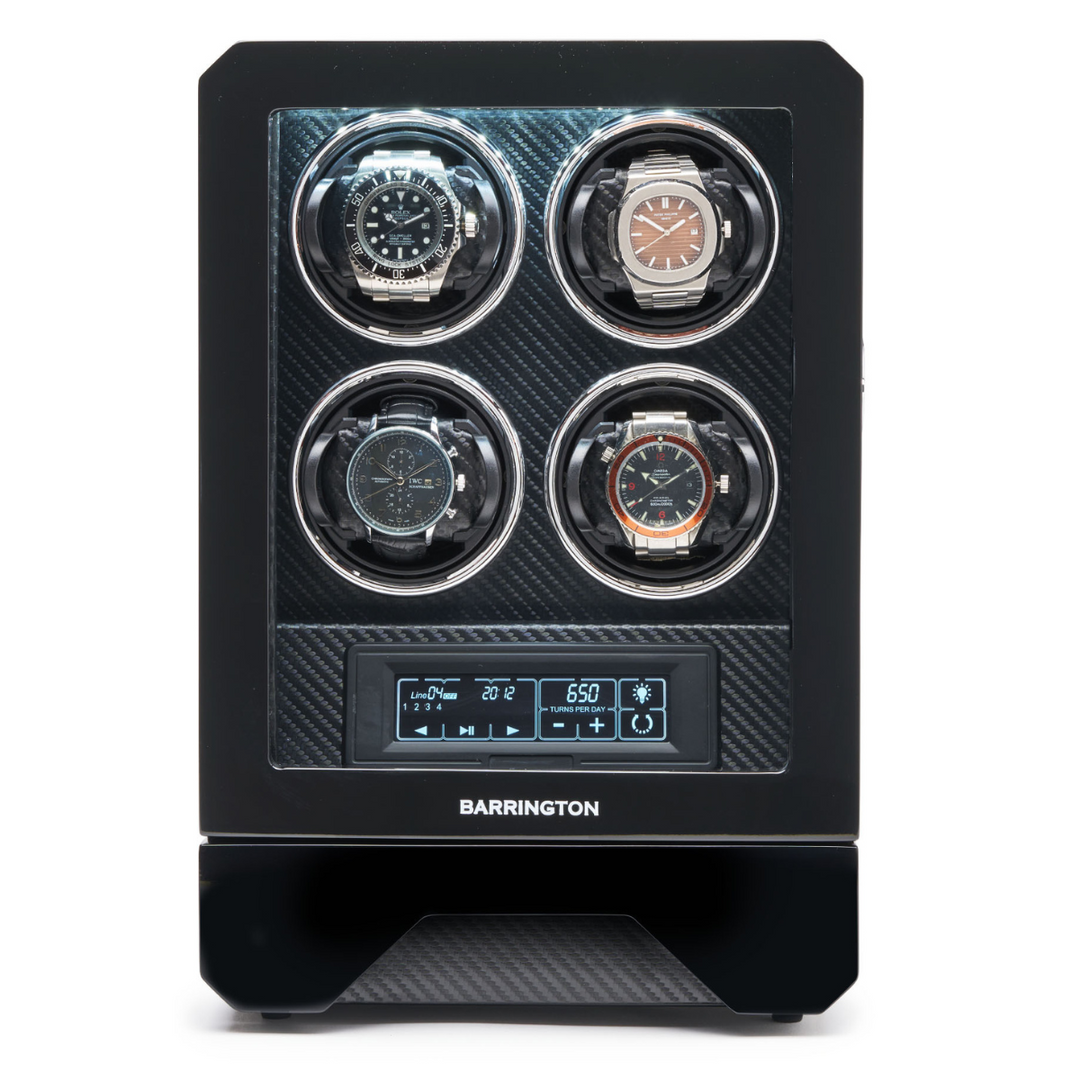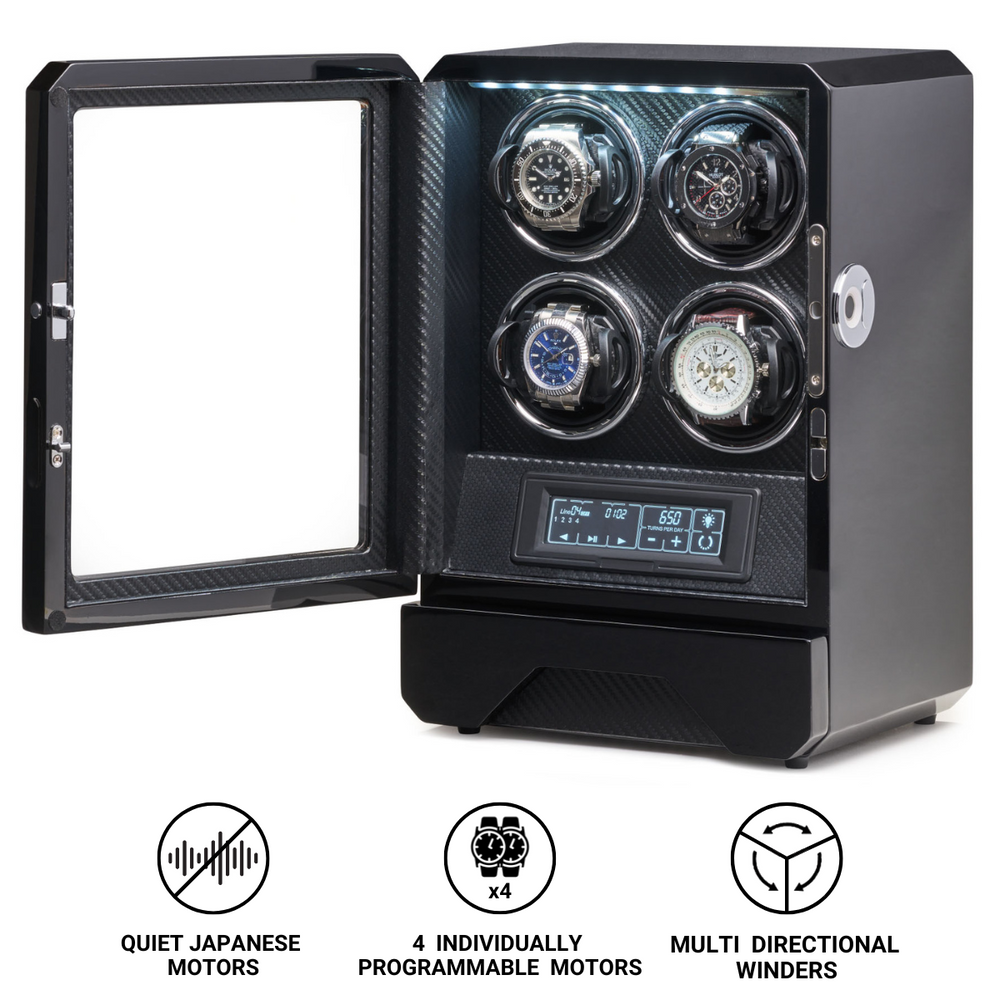Comparing Tudor and Rolex
Few names in watchmaking are as tightly intertwined as Rolex and Tudor. Both brands trace their origins back to Hans Wilsdorf, the visionary entrepreneur who redefined the notion of wristwatch reliability in the early 20th century. While Rolex was founded in 1905 and quickly established itself as the benchmark for precision and innovation, Wilsdorf saw the need for a complementary marque that could offer the same standards of dependability at a more accessible price. Thus, in 1926, Tudor was born.
Although Tudor began as a more affordable counterpart to Rolex, its identity was never that of a mere sub-brand. It was a deliberate and strategic creation, intended to broaden the reach of Swiss horology without compromising on performance. In its early years, Tudor watches often featured Rolex cases and crowns, but were powered by outsourced movements. This symbiosis enabled Tudor to benefit from the credibility of its elder sibling, while cultivating a distinct following of its own.
Nearly a century later, comparisons between the two remain as relevant as ever. Not because Tudor attempts to replicate Rolex, but because both brands have evolved into markedly different propositions within the same family. Rolex has moved decisively upmarket, refining its status as the definitive luxury watchmaker, while Tudor has embraced its role as a modern tool-watch specialist, unafraid to experiment with materials, colours, and heritage-driven design cues.
Today, they no longer compete for the same customer. Instead, they occupy adjacent positions on the horological spectrum. Rolex is a statement of refinement, legacy, and precision. Tudor is an expression of utility, individuality, and purposeful design. Yet despite their differences, both brands remain firmly rooted in Wilsdorf’s original ambition: to make robust, reliable watches that stand the test of time.
Brand Philosophy and Identity
While Rolex and Tudor share a common origin, they have grown into two distinct expressions of watchmaking philosophy. Their differences are not just technical or financial - they are cultural, aesthetic, and intentional.
Rolex: Prestige Through Precision
Rolex operates at the upper tier of the horological spectrum, where refinement and recognition converge. Its approach is characterised by meticulous consistency. Whether it is a Datejust from the 1980s or a modern Submariner, the essence remains intact - polished, confident, and unmistakably Rolex.
-
Design: Minimal deviation across decades. Every change is evolutionary.
-
Positioning: A global symbol of achievement and status.
-
Craftsmanship: Every component - from the movement to the case alloy - is manufactured in-house.
-
Public image: Understated, authoritative, aspirational.
Rolex avoids overt marketing flourishes. Its ambassadors - Roger Federer, James Cameron, Dwayne Johnson - are visible, but the spotlight remains squarely on the watches. The message is clear: Rolex is the constant.
Tudor: Utility, Heritage, Character
Tudor, by contrast, embraces boldness and accessibility. It draws heavily from its historical archives, reworking past references into modern tool watches. Yet what sets Tudor apart is its confidence in experimentation - from bronze cases to hybrid aesthetics that fuse sport and vintage.
-
Design: Vintage cues, purposeful contrasts, unconventional materials.
-
Positioning: Practical luxury with a sense of identity.
-
Craftsmanship: A mix of in-house and collaborative movement development (notably with Kenissi).
-
Public image: Youthful, assertive, expressive.
Its ambassadors reflect this modern edge - David Beckham, Lady Gaga, Jay Chou - figures known for originality, adaptability, and cultural impact. Tudor is not shy about emotion or visual drama; it celebrates character over convention.
Two Philosophies, One Legacy
|
Aspect |
Rolex |
Tudor |
|
Core identity |
Precision and permanence |
Purpose and personality |
|
Design ethos |
Conservative, timeless |
Neo-vintage, experimental |
|
Materials |
904L Oystersteel, gold alloys |
316L steel, bronze, titanium |
|
Marketing tone |
Subtle, product-led |
Bold, personality-led |
|
Emotional appeal |
Legacy and recognition |
Expression and individuality |
In short, Rolex creates watches that confirm who you are. Tudor creates watches that express how you see yourself. One reassures, the other engages. For collectors, enthusiasts and first-time buyers alike, the difference lies not only in what the watch does - but in what it says.
Technical Excellence and Watchmaking Approach
Beneath their distinct brand identities, both Rolex and Tudor are grounded in the same Wilsdorf principle: reliability without compromise. Yet when it comes to technical execution, the two brands approach watchmaking from different perspectives - one refined and proprietary, the other practical and adaptive, increasingly self-sufficient.
The In-House Movement Divide
For decades, Rolex has maintained an uncompromising commitment to producing its movements entirely in-house. Every calibre is manufactured, assembled, and tested within Rolex's vertically integrated facilities. This includes the celebrated 32xx series movements, known for their 70-hour power reserves, Chronergy escapements, and Parachrom hairsprings.
Tudor, in contrast, long relied on third-party Swiss ébauche movements, most notably from ETA. This allowed the brand to keep costs accessible while maintaining durability. However, in 2015, Tudor introduced its first in-house calibre - the MT5621 - marking a strategic shift towards greater independence. Since then, in-house movements have gradually expanded across the Black Bay, Pelagos, and Ranger collections, with many developed in collaboration with movement manufacturer Kenissi.
While Rolex movements remain the benchmark for internal innovation, Tudor’s calibres are robust, reliable, and highly competitive in both specification and performance.
COSC vs Superlative Chronometer: Understanding Certification
Both brands take chronometric performance seriously, though they measure it slightly differently.
-
Tudor certifies many of its in-house movements through COSC (Contrôle Officiel Suisse des Chronomètres), which requires an average deviation of -4 to +6 seconds per day.
-
Rolex, however, applies its own additional standard, branding its watches as Superlative Chronometers. These must meet COSC requirements before undergoing further in-house testing to achieve a tighter tolerance of -2 to +2 seconds per day.
Although Rolex’s standard is more stringent on paper, in real-world conditions many Tudor in-house movements perform within similar tolerances - often within a few seconds per day of their Rolex counterparts.
Materials and Manufacturing: Proprietary vs Purposeful
Rolex is renowned for its use of exclusive materials. Since 2005, the brand has manufactured its own alloys, including:
-
904L Oystersteel: more corrosion-resistant than industry-standard 316L
-
Everose gold: Rolex’s proprietary rose gold blend, resistant to fading
-
Cerachrom: a scratchproof ceramic bezel material with platinum or gold-filled numerals
Tudor, by contrast, uses 316L stainless steel for most models - a proven, robust industry standard - but is bolder in its experimentation with alternative materials such as:
-
Bronze: used for patina-developing cases in the Black Bay Bronze
-
Titanium: lightweight, anti-corrosive and featured in the Pelagos
-
Ceramic: recently introduced in models like the Black Bay Ceramic
This divergence reflects their respective aims. Rolex emphasises in-house purity and refinement. Tudor focuses on functionality and modern material expression.
Case Construction, Sealing, and Finishing
Both brands uphold rigorous standards of case integrity and construction, but Rolex exercises greater control over micro-tolerances and finishing consistency. For example:
|
Feature |
Rolex |
Tudor |
|
Steel Grade |
904L (Oystersteel) |
316L |
|
Water Resistance |
100 m to 1,220 m |
100 m to 500 m |
|
Bezel Materials |
Cerachrom (ceramic with precious metals) |
Anodised aluminium or ceramic |
|
Bracelet Adjustment |
Glidelock, Easylink systems |
Micro-adjustment clasps on select models |
|
Finishing Philosophy |
Flawless uniformity |
Slightly more tool-oriented, brushed-heavy |
While Rolex maintains tighter tolerances and higher aesthetic uniformity, Tudor favours robustness and clarity of function. Neither brand compromises on structural reliability - but they prioritise different user experiences.
In summary, Rolex leads with uncompromising internal control and material prestige. Tudor responds with intelligent simplification, targeted innovation, and a dedication to modern utility. Both approaches result in watches of exceptional build quality - one engineered to exemplify perfection, the other designed to be worn without hesitation.
Accessibility, Value and Ownership Experience
The difference in price between Rolex and Tudor is more than a matter of specification. It reflects divergent philosophies of perceived value, market positioning, and the emotional motivations behind ownership. While both brands offer high-quality mechanical timepieces, they operate at distinct levels of expectation, symbolism and collectability.
The Price Gap: More Than Just Materials
At retail, the entry point for a Tudor watch sits at around £2,000 to £3,500, depending on the model. By contrast, a standard Rolex Oyster Perpetual starts above £5,500, with core collections such as the Submariner, Datejust or Explorer often retailing above £7,000. On the secondary market, the difference becomes even more pronounced, with many Rolex models selling well above list price due to scarcity and demand-driven premiums.
This price disparity arises from multiple factors:
-
Manufacturing complexity: Rolex produces virtually everything in-house, from movements to metals
-
Material costs: exclusive alloys such as 904L steel and precious metals add value
-
Finishing standards: Rolex cases, dials and bracelets undergo more intensive finishing
-
Brand equity: Rolex commands a premium due to its global recognition and heritage
Tudor, while increasingly vertically integrated, focuses on delivering excellent mechanical watches without entering the realm of symbolic luxury. The result is a collection that feels more tool-oriented and less aspirational in tone, yet no less refined in execution.
Image and Perception: Status vs Substance
The ownership experience of a Rolex is inseparable from its cultural symbolism. It is recognised not only as a timepiece but as a signal - of achievement, wealth or refined taste. Whether intentional or not, wearing a Rolex often communicates success, even to those with no interest in watches.
Tudor, in contrast, projects a more grounded identity. It appeals to those who value history, mechanical performance and design integrity, without necessarily seeking status confirmation. Tudor owners often describe their watches as understated, considered and personal - worn for themselves rather than for external validation.
In short:
|
Factor |
Rolex |
Tudor |
|
Symbolism |
High-status, widely recognisable |
Purposeful, enthusiast-driven |
|
Emotional Appeal |
Prestige, legacy, celebration |
Utility, confidence, individuality |
|
Ownership Motive |
Milestone, recognition, investment |
Practicality, passion for horology |
Collectability and Long-Term Value
Rolex enjoys unparalleled strength on the secondary and auction markets. Iconic models such as the Daytona, GMT-Master II and vintage Submariners often see consistent appreciation, with certain references reaching record-breaking prices. Even current-production models can command premiums due to demand and restricted availability.
Tudor’s trajectory is different. While not typically speculative assets, modern Tudors are increasingly seen as collector-worthy in their own right. Limited runs, strong design codes and growing brand credibility have positioned pieces like the Black Bay Fifty-Eight, Pelagos FXD and North Flag as potential future classics. Meanwhile, vintage Tudor Submariners have already begun to mirror the desirability of early Rolex references.
It is fair to say:
-
Rolex is the blue-chip investment - slow to depreciate, sometimes lucrative to hold
-
Tudor is the collector’s opportunity - accessible today, with potential for recognition tomorrow
The Experience of Ownership
Ultimately, what defines the value of a watch is not solely price or brand cachet - it is the experience it offers over time. Rolex delivers certainty. It is precise, beautifully made, and universally respected. Tudor, by contrast, offers character. It is expressive, historically informed, and intentionally different.
Where Rolex reassures with permanence, Tudor engages with personality. And for many collectors, the satisfaction of ownership depends less on prestige and more on connection - something Tudor has cultivated with increasing success.
For Tudor, Rolex and Beyond: Explore Our Watch Winder Selection
Owning a fine mechanical watch is about more than admiration - it is about care, consistency and preserving performance over time. Whether you wear your Tudor daily or reserve your Rolex for formal occasions, a reliable watch winder ensures your timepiece remains wound, accurate and ready when you are. At Barrington Watch Winders, we design our winders with the same principles that define the best watches: precision, durability and elegance.
Barrington Single Winder - Midnight Blue
(The Barrington Single Watch Winder in Midnight Blue combines understated elegance with advanced functionality, making it an ideal companion for any automatic timepiece. Designed with versatility in mind, it offers a choice of rotation directions and five Turns Per Day (TPD) settings to suit a wide range of watch movements. Whether you own a lightweight dress watch or a more substantial diver, the winder can be precisely configured to meet its winding requirements. Housed in a compact case with a deep satin-blue finish, it features a premium Japanese motor renowned for its whisper-quiet operation, allowing seamless placement in bedrooms or offices without disruption.
What truly sets this model apart is its practical engineering. The winder operates via mains power or AA batteries and includes Barrington’s signature 'Jump' feature, enabling multiple units to be linked and powered from a single source. The integrated LED indicator, adaptable cushion sizes, and international plug fittings further reinforce its suitability for collectors who demand both form and function. Whether used as a standalone display or part of a connected stack, the Midnight Blue winder offers refined care for your most valued automatic watches).
Barrington Special Edition Single Winder - Grey Koto
(The Barrington Special Edition Single Watch Winder in Grey Koto brings together technical excellence and striking design in a compact form. Its distinctive woodgrain finish adds a refined aesthetic edge, making it an elegant addition to any interior, whether displayed alone or as part of a curated watch collection. Inside, the ultra-quiet Japanese motor delivers smooth, near-silent operation, while fully customisable rotation settings and multiple TPD options ensure compatibility with virtually any automatic watch - from slimline dress models to more robust tool pieces.
Functionally, the Grey Koto winder offers exceptional flexibility. It can be powered via mains or AA batteries, and features the Barrington 'Jump' function, allowing multiple winders to be linked to a single power source for a streamlined setup. The included international adapter makes it ideal for travel or collectors with global routines. Designed with collectors in mind, it balances precision engineering with thoughtful details - including interchangeable cushion sizes and gentle rotation cycles - to keep your timepiece in optimal condition at all times).
2 Watch Winder
(The Barrington 2 Watch Winder offers an elevated experience for collectors with multiple automatic timepieces. Housed in a gloss-finished display case with carbon-fibre accents, it features two individually programmable rotors and an intuitive digital interface. Each watch can be set independently with precise Turns Per Day and directional preferences, accommodating even the most demanding winding requirements. A standout feature is the integrated fingerprint scanner, offering secure and stylish access to your watches - a rare inclusion at this level.
This model balances performance with luxury-focused practicality. Ultra-quiet Japanese motors ensure silent running, while the in-built storage drawer provides space for additional pieces, including quartz watches. A soft LED downlight highlights the watches in rotation, and both touch and remote controls allow for effortless adjustment. Designed for daily use and long-term protection, this winder is ideally suited to those who value both engineering excellence and refined presentation in their watch care routine).
From single-display options to multi-watch winders for serious collectors, each Barrington model is crafted to complement the watch it holds. With quiet operation, flexible rotation settings and refined aesthetics, our winders are a seamless extension of your horological routine. Explore the range and discover how a well-designed winder can elevate the way you store and enjoy your watches.
Conclusion: Complementary, Not Competitive
Tudor and Rolex are not rivals, but reflections of the same founding philosophy - one refined, the other expressive. Rolex offers prestige, legacy and unmatched brand recognition. Tudor, by contrast, delivers mechanical integrity, thoughtful design and a more understated ownership experience. Neither is a compromise. Each brand serves a different kind of collector, one guided by lifestyle, temperament and taste.
At Barrington Watch Winders, we appreciate the distinction. Whether your wrist carries a Rolex Datejust or a Tudor Black Bay, our watch winders are built to preserve the accuracy, condition and character of every automatic timepiece. Because a watch is more than an object - it is the companion to your time, your moments and your style.
Frequently Asked Questions: Tudor vs Rolex Explained
Are Tudor watches made by Rolex?
Yes, Tudor is owned by the same parent foundation as Rolex and was originally established by Rolex founder Hans Wilsdorf in 1926. While the two brands share historical ties and similar manufacturing values, Tudor operates independently today. It produces its own designs and movements, and positions itself as a maker of high-quality tool watches. Tudor is not a sub-brand but a distinct marque with its own identity.
Why are Rolex watches significantly more expensive than Tudor?
The price difference reflects a number of factors, including Rolex’s fully in-house production, the use of proprietary materials such as 904L steel, and a more intensive level of finishing. Rolex also holds strong symbolic value, which adds to its cost through brand perception and market demand. Tudor focuses on practicality and function, offering strong mechanical specifications at a more accessible price. Both brands offer excellent value within their respective positions.
Do Tudor watches use the same movements as Rolex?
No, Tudor and Rolex use different movements. Rolex manufactures all of its movements in-house to proprietary standards, including its Chronergy escapement and Parachrom hairspring. Tudor initially used third-party calibres but has gradually developed its own in-house movements, often through collaboration with Kenissi. These movements are COSC-certified and deliver strong performance, although they are not identical to Rolex calibres.
Which brand holds better long-term value, Tudor or Rolex?
Rolex watches generally hold and increase their value more reliably over time, particularly in the secondary and collector markets. Iconic models such as the Submariner and Daytona are widely regarded as investment pieces. Tudor watches are more affordable and not typically seen as investment assets, but recent models have shown strong collector interest. For many buyers, Tudor offers better value in terms of mechanical performance per pound spent.
Can I use the same watch winder for both Tudor and Rolex watches?
Yes, a high-quality watch winder is suitable for both brands. Both Tudor and Rolex use automatic movements that require regular motion to stay wound. Barrington Watch Winders, for example, offer adjustable settings that support the full range of rotation directions and turns per day, making them compatible with nearly all automatic models. Using a watch winder helps maintain accuracy and lubrication, especially for watches worn less frequently.














